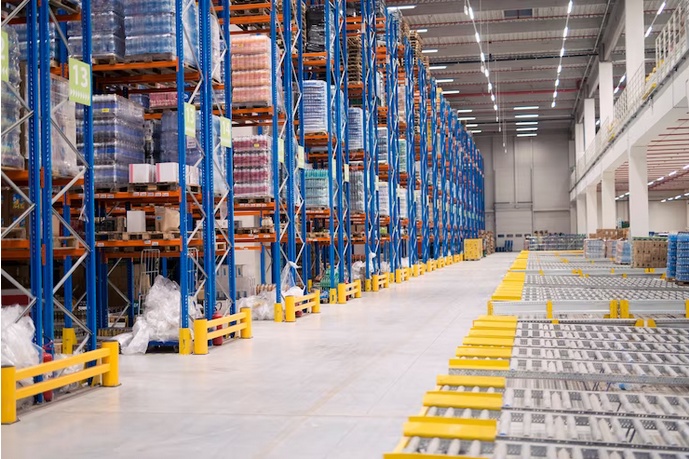In the realm of industrial pallet racking storage and warehousing, selecting the right pallet racking system is a crucial decision. The choice of the right system can significantly impact a facility's storage capacity, accessibility, and overall efficiency. With several options available, including selective racking, drive-in racking, push-back racking, and cantilever racking, it's essential to understand the unique features and benefits of each to make an informed decision.
Selective Racking: Versatile and Accessible
Selective racking is perhaps the most common and versatile pallet racking system in use today. It is designed to provide direct access to each pallet, making it an excellent choice for facilities with diverse product ranges and frequent inventory turnover. The system features horizontal beams that support pallets, allowing for easy loading and unloading using forklifts.
One of the key advantages of selective racking is its accessibility. It offers quick and straightforward access to any stored pallet, making it suitable for businesses that require high inventory turnover rates. Selective racking also allows for efficient use of vertical storage space, maximizing storage capacity.
However, selective racking is not without its limitations. It may not be the best choice for facilities with limited floor space, as it requires more aisle space for forklift maneuverability. In such cases, other racking systems that offer higher storage density may be more suitable.
Drive-In Racking: High-Density Storage
Drive-in racking is a space-saving solution designed for high-density storage. Instead of providing access to each pallet individually, drive-in racking allows forklifts to drive directly into the rack structure. This system follows a last-in, first-out (LIFO) inventory management method, which means that the last pallet stored is the first to be retrieved.
Drive-in racking is ideal for facilities with a high volume of the same product. It optimizes storage space by reducing the number of aisles required, enabling businesses to store more pallets in the same footprint. This is particularly advantageous for warehouses with limited space and a large number of pallets of identical items.
While drive-in racking excels in maximizing storage density, it may not be suitable for facilities with a need for quick and frequent access to individual pallets. Retrieving pallets from the middle of the rack may require the removal of multiple pallets, potentially leading to longer retrieval times.
Push-Back Racking: Efficient and Dynamic
Push-back racking is a dynamic storage system that combines both density and accessibility. It operates on a last-in, first-out (LIFO) inventory management method, where new pallets are loaded onto inclined rails. When a new pallet is loaded, it pushes the existing pallets backward along the rails. This design allows for multiple pallets of the same product to be stored in a single lane.
One of the advantages of push-back racking is its efficient use of space. It provides a higher storage density compared to selective racking while offering greater accessibility than drive-in racking. Push-back racking is particularly well-suited for facilities that deal with a variety of products, each with a different turnover rate.
The dynamic nature of push-back racking also helps in automatically rotating stock, which can be beneficial for managing inventory that has expiration dates or quality concerns. However, it's important to note that push-back racking may require slightly more aisle space than drive-in racking due to its dynamic design.
Cantilever Racking: Ideal for Long and Bulky Items
Cantilever racking is a specialized system designed for the storage of long, bulky, and irregularly shaped items. It features arms that extend from vertical columns, creating a series of open shelves. This design allows for the storage of items like lumber, pipes, and metal bars that may not fit well on traditional pallets.
One of the key advantages of cantilever racking is its adaptability to various product sizes and shapes. It allows for easy access and retrieval of long and bulky items, making it a preferred choice for businesses dealing with materials of different lengths and dimensions.
Cantilever racking's open design also provides excellent visibility and accessibility to the stored items, making it easier to manage and locate specific products. However, it may not be the most space-efficient option for standard palletized goods, and it is best suited for facilities that primarily handle long and irregular items.
Conclusion: Tailoring Your Choice
Selecting the right pallet racking system for your facility is a critical decision that requires a thorough understanding of your storage needs and operational requirements. Each system offers unique advantages and trade-offs, making it important to align your choice with your specific business context.
For facilities with diverse product ranges and frequent inventory turnover, selective racking offers excellent accessibility and efficient space utilization. Drive-in racking is ideal for high-density storage of identical products but sacrifices some accessibility. Push-back racking strikes a balance between density and accessibility, making it a versatile choice for those with varying product turnovers. Cantilever racking, on the other hand, specializes in accommodating long and bulky items.
In the end, the right choice depends on your specific storage needs and goals. By carefully assessing your inventory, space constraints, and operational requirements, you can make an informed decision that optimizes your facility's storage capacity and efficiency, ultimately contributing to the success of your business.


No comments yet